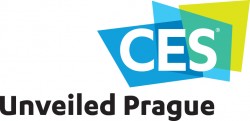Leading Czech scientists present result of Czech nanotechnology research in Olomouc
2 Sep. 2009 | CzechInvest | At a conference in Olomouc today, thirty leading scientists presented the current results of Czech research in the area of nanotechnology.
The conference, held under the auspices of the Olomouc region, was focused primarily on the use of nanotechnologies in medicine. I believe that nanotechnologies will be used in a truly broad range of application within five, maximum ten years – just as with the adoption of antibiotics, which also took two decades,” said Věra Toršová of the Institute of Public Health in Ostrava.
“I am very pleased that Olomouc could host this event for the third time,” said Pavel Horák, lieutenant governor of the Olomouc region, welcoming the conference participants. “Thanks to the Czech Nanotechnology Cluster and other institutions based in the Olomouc region that are dedicated to research and trade in the area of nanotechnologies, the region has an extraordinary opportunity to become a centre for working with nanotechnologies in the Czech Republic.”
“What are nanotechnologies? Years ago the National Bank issued commemorative silver coins weighing ten grams. Experienced dairy farmers put these coins in milk tanks so that the milk would not spoil. Today, we could similarly treat roughly ten million such tanks with the same amount of silver,” said Jiří Oborný of NanoTrade, the main organiser of the conference, explaining the nature of nanotechnologies.
“For example, we are currently experimenting with emulsions of mineral oils with antimicrobial nanoparticles of parachlorometaxylenol. Practical uses? Not long ago at Ruzyně Airport, it was necessary to disinfect an airliner that had brought people from Southeast Asia who were clearly infected with a new virus. If you use a standard disinfectant, you risk corrosion, which is not an issue with mineral oils,” said Erich Pazdziora of the Institute of Public Health in Ostrava.
At Palacký University in Olomouc, a new negative contrast surfactant has been developed for examinations using nuclear magnetic resonances. This was presented by Kateřina Poláková of the Centre of Nanomaterial Research at Palacký University in Olomouc, who stated: “This is used in examinations of the bile duct or small intestine. An hour before the examination, the patient drinks six hundred to one thousand millilitres of a liquid that is a mixture of our nanoparticles based on iron oxide, water and juice. The substance is as effective as or somewhat more effective than similar solutions in ordinary commercial use in hospitals today. We have already conducted successful trials with patients at the hospital in Bánská Bystrice.”
“The world has problems with increasing resistance to antibiotics. Therefore we need nanoparticles with an antimicrobial effect, in which case resistance would be out of the question,” explained Erich Pazdziora of the Institute of Public Health in Ostrava. Nanotechnologies can be used, for example, on operating-room surfaces or wherever it is necessary to use disinfectants. For example, we have very successfully tested a photocatalyst, which basically involves using surface coatings containing nanoparticles that destroy microbes when exposed to light.”
“We mustn’t overestimate the importance of antibiotics,” adds Věra Toršová. “Recently we have seen an every growing number of multi-resistant microbes. There is clearly room for new technologies using silver nanoparticles, which can reliably destroy bacteria. Our trials indicate that when treated with nanosilver, wounds show a four- to five-fold decrease in the number of bacteria within 24 hours, which is simply not possible with antibiotics.”
The Olomouc-based firm NanoTrade is dedicated to the practical application of nanotechnologies. “Several years ago we pondered how to make practical use of nanotechnologies, how to get them closer to people. Then I got the ideas to produce socks,” says Jiří Oborný. “Thus NanoSilver technology came into being. Using this technology, we manufacture socks and other items of clothing that have antibacterial effects. In practice, this means that the wearer of clothing with silver nanoparticles still feels fresh even after several days of wearing the clothes.”
Ladislav Torčík of NanoTrade also presented technology from the British company Biocote that can be used to protect surfaces wherever it is necessary to minimise the risk of infection or contamination, e.g. in hospitals and food-production facilities.
The firm CZP of Dolní Dobrouč has been involved with nanotechnologies and biotechnologies for several years. The company is also a winner of the Investment with the Greatest Innovation Potential award present by CzechInvest and the Association for Foreign Investment. “In the Czech Republic we are able to prepare materials from nanofibres that contain active medicinal substances. These can be used in operations so that they dissolve in the patient’s body and gradually deliver the medicinal substances directly to the specific place in the body where they are needed,” says Vladimír Velebný, director of CPN and chairman of the Nanomedic cluster.
The MedChemBio cluster was recently established at the science and technology park of Palacký University in Olomouc. “We want to dedicate ourselves to developing new drugs and diagnostics,” says Jiří Herinek, director of the science and technology park, describing the cluster’s main objectives. “Top-quality results do not come into being on their own, but are rather due to long-term cooperation among leading scientists. All members of the cluster will be able to use, for example, a new laboratory for examining the effectiveness and safety of newly developed substances. Thanks to this, research will be far more efficient than would be the case if it was divided among isolated laboratories.”
“The Czech Republic is building a very strong position for itself in the field of nanotechnologies,” says Alexandra Rudyšarová, acting CEO of CzechInvest, o“ne of the co-organisers of the Olomouc conferences. “Nanotechnologies are used in a range of technological processes in the Czech Republic, such as in the production batteries, which are gaining unprecedented capacity thanks to nanotechnologies. Support for application and commercialisation of these state-of-the-art technologies is one of CzechInvest’s primary objectives.”
For more information please contact the CzechInvest Press Centre
Lucie Kocourková, spokesperson, phone: +420 296 342 538, lucie.kocourkova@czechinvest.org
Contact to the Czech Nanotechnology Cluster
Miroslav Mašláň, cluster chairman, mobile: +420 608 975 399, e-mail: president@nanoklastr.cz
Contact to the Science and Technology Park at Palacky University
Jiří Herinek, director, mobile: +420 724 315 041, e-mail: jiri.herinek@upol.cz
Contact to NanoTrade
Jiří Oborný, director for research and development, mobile: +420 605 253 880, e-mail: oborny@nanotrade.cz
Contact to the Olomouc region
Ivo Heger, director of the press department, tel.: +420 585 508 443, e-mail: i.heger@kr-olomoucky.cz








